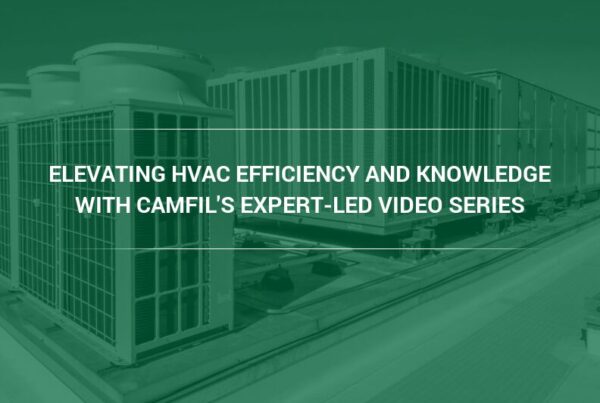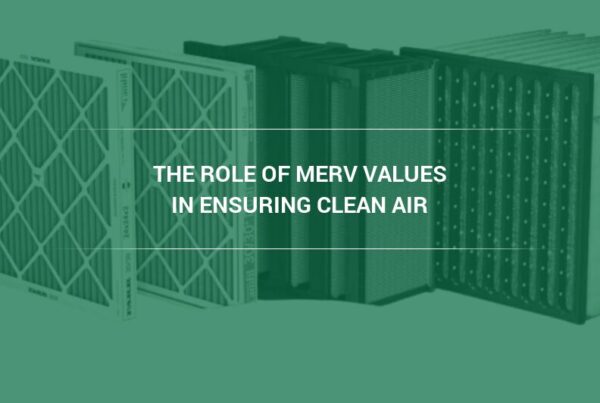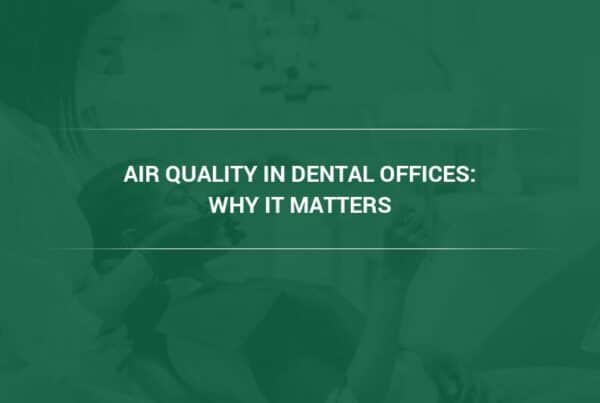If you’re new at choosing filters, odds are you’ve been confused by the wide variety of options. What do all the ratings, classifications and values mean? What’s the best filter, and is a more expensive filter worth the investment?
Opinions vary widely on the topic, but every professional agrees a good HVAC air filter is necessary for your home because they’ve seen all the problems that the wrong kind of air filter can create in a home’s HVAC system. Burnt out motors and controls can result from too-restrictive filters. Coils, motors, and blowers can also easily become clogged by weak filters creating higher fan usage resulting in higher energy costs.
HVAC air filters are necessary to remove contaminants from the air in your home and improve your home’s air quality.
Understanding MERV and the Types of Air Filters
Understanding MERV and the types of air filters is critical to choosing the best filter for you.
MERV 1 to 4 typically consists of spun fiberglass filters. These are cheaply-priced and disposable, and will capture around 80% of particles that are 50 microns and larger. They will also capture about 25% of the debris that includes particles within the 3 to 10 micron range.
“Many professionals advise against the use of these filters, as they provide only minimal protection from dirt and dust which build up on fan motors, heat exchangers, and other dirt collecting surfaces,” says Kevin Wood, Camfil USA Vice President Sales & Marketing. “These filters remove the largest particles and are less restrictive to airflow, however they don’t filter the tiny harmful contaminants which can affect your health.” (1)
MERV 5 to 8 consist of disposable, pleated media filters. , These mid-efficiency range filters end up trapping around 80 to 95 percent of the debris from five microns and up. The cost is about four times more than the spun fiberglass filters of MERV 1-4, but have much better contaminant removal capabilities.
Electrostatic filters range from MERV 2 to MERV 10 and they utilize charged fibers to remove particles from the air. There are disposable pleated models which cost approximately $10, and washer-friendly, reusable versions which can cost as much as $40. These filters can last for up to eight years and dry easily after washing, to stop mildew or mold from developing. They do drop in efficiency over time while in service so if air quality is the prime consideration you may want to consider other types.
MERV 11 to 13 are high-efficiency filters that come in a variety of configurations. These filters can remove particles as small as 0.3 microns and other debris like microorganisms and bacteria. Some are five inches thick, others range up to 12 inches thick, and some of these filters are designed to last up to a full year.
High-efficiency particulate air (HEPA) filters are the high end of all filtration systems and are able to remove at least 99.97% of all particles as small as 0.3 microns. HEPA filters substantially restrict airflow and must be combined with appropriate modifications to the HVAC system or used in free-standing portable units. For high critical health considerations, this may be a level you want to consider. The air quality supplied can be equivalent to that supplied to a hospital operating suite.
Upkeep Practices for Air Filters
It’s important to understand the best upkeep practices for air filters.
When choosing an air filter, the cost is an important thing to think about. How much money will a high-quality filter run you, and is it worth it? The price is dependent on which filter you pick, its configuration, and its construction component quality. The better the rating and the larger the scale of the filter, the more it will cost. The quality of the filter will impact your upkeep needs, as cheaper filters may require more maintenance to stay effective. High-quality filters are more expensive than disposable filters, but last longer and will pay off in the long run.
“An important consideration is that even high-quality filters must eventually be replaced. Even though some filters are made to last for several years, the majority of filters will function for about three to five months and should then be replaced for maximum overall performance,” says Camfil’s Kevin Wood. “The cost for replacement must be considered as well.”(2)
Estimates of dust holding capacities obtained from laboratory tests are useful when evaluating comparable filters inside a single manufacturer’s range, but comparisons between different filters or producers can be deceptive.
This is due to the fact that there are variations in testing conditions, dust ranges, and other aspects. Non-laboratory dust, humidity, and temperature are difficult to immediately relate to laboratory data. You should listen to professional suppliers who have reliable technical experience.
All filters have a finite capacity and staged filter sequencing permits cheaper filters to be sacrificed to preserve the more valuable final filter. If a filter appears grimy with collected dust, it’s far beyond the point of a cost-effective change out.
Considerations for Choosing the Best Air Filter
There are many considerations for choosing the best air filter. While a filter with a higher MERV rating could provide better filtration, it’s important to recognize that too high a MERV could cost you more in terms of your heating and air conditioning system. The higher the MERV, the more restrictive the airflow is through the device, causing the equipment to work harder. Your intention should be to achieve the proper balance between air filtration levels, airflow, and energy efficiency.
“The default choice for most places and systems would be a MERV 6-8 system. A better MERV filter should be utilized at the recommendation of your HVAC system provider and professionals,” says Wood. “Your technician should verify that your HVAC system has the ability to supply a suitable amount of air across the higher performance filter. You do not want to give up your energy-efficiency for filter efficiency; you’re looking for a balance of the two when choosing the best air filter.” (3)
If your family has allergic reactions or respiratory issues and you want a powerful MERV air filter, look for a home air filtration solution that can meet both your power and filter desires.
If you’re renting a place and don’t have allergy troubles, pets, or a lot of dust, then you may want to look for cheap spun fiberglass filters with a cardboard body. Swapping these out every three months you could save some money, however, these filters are flimsy and at risk of leaking dust into the HVAC device. This would lead to dirt buildup on coils and motors, and over time the cost of repairs could prove to be more than you would save by using cheap filters.
More powerful MERV pleated filters now do a much better job filtering than in the past. This is due to the fact that the key to getting better filtration vs. pressure drop lies in getting the most pleating possible per foot, and modern designs have much less airflow problems at higher MERV levels. They’re much more effective than the median-grade pleated filters at enhancing indoor air quality.
Take all the considerations for air filters into mind when purchasing a filter, make sure you understand MERV, and know the best upkeep practices for your filters.
For help choosing the best air filters for your needs, contact Camfil and speak to one of our knowledgeable professionals.
Media Contacts:
Lynne Laake
Camfil USA Air Filters
T: 888.599.6620,
E:Lynne.Laake@camfil.com
F: Friend Camfil USA on Facebook
T: Follow Camfil USA on Twitter
Y: Watch Camfil Videos on YouTube
Sources:
https://household-tips.thefuntimesguide.com/best_air_filters/
http://www.directenergy.com/blog/check-air-filters-right-home/
http://www.serviceexperts.com/blog/bringing-clarity-to-home-air-filtration-confusion



